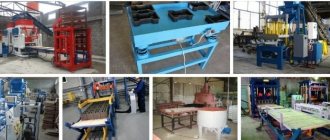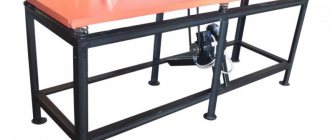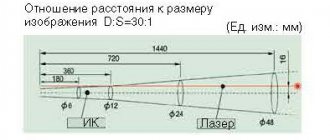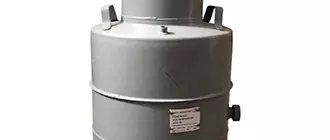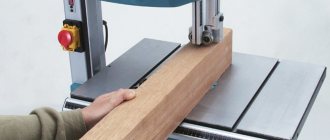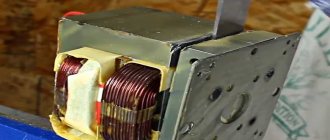The actions of machines on a large construction site seem coordinated and very fast. Just yesterday a huge bucket was digging into the ground, and today there is already the first level of the future building. This is on large-scale construction sites. But even if you need to build a small country house, the principles are the same: first you need to prepare the soil and tamp it down. Buying expensive mechanisms for temporary use is not advisable. Do-it-yourself vibrating plate is a real and affordable solution.
A vibrating plate is a special unit designed for compacting soil, concrete surfaces, and asphalt surfaces.
What is Vibrating Plate
A vibrating plate is specialized hand-held equipment that is used for various tasks of tamping and compacting soil or other bulk materials. Due to its dimensions, this equipment is very convenient for working in small areas and in hard-to-reach places.
The purpose of a vibrating plate is to make the base more resistant to damage by increasing density and eliminating excess air and moisture. A durable surface will not allow the foundation, paving slabs, or new asphalt surface to sag.
To the question: what is a vibrating saw, the most common answer is a frame with a motor, a handle and a control unit, mounted on a rectangular base made of cast iron or a durable steel sheet. This is what most compaction boards look like. Although their device is much more complex.
However, any vibrating plate can be easily transported from one object to another: light ones by car, medium and heavy ones by light commercial vehicles such as a heel or gazelle, or on a tow truck platform.
Manufacturers, recommended models of vibrating plates
For small-scale work, it is recommended to buy an electric vibrating plate. It is not heavy, has a folding handle, which allows you to move and transport it to the desired object. The unit has an adjustable frequency converter that allows you to change the vibration frequency, limit starting currents, save energy, and set the optimal operating mode for given conditions. You can buy an electric vibrating plate, the price of which is several times less than types with fuel engines, from any manufacturer that offers similar products.
Ammann vibrating plates are universal and can be easily adapted to various types of work
Vibrating plates with gasoline engines are the most in demand, and therefore widely represented. The units of the Swiss company Ammann, whose factories have long been operating throughout Europe and have already expanded beyond its borders, are very popular. The line of units includes almost all types (from ultra-light to the heaviest) diesel vibratory rammers.
Ammann vibrating plates are distinguished by a high level of comfortable conditions necessary for the operator’s work. The guide handle is isolated from the engine as much as possible to reduce vibration. An additional vibration-damping guide has also been patented, which can be used as an additional option. Engines are economical. There are models that run on both gasoline and diesel fuel.
Splitstone vibrating plates today have taken a strong place in the construction equipment market as equipment that has a high level of quality and reliability
Among domestic manufacturers, the Russian group of industrial companies Splinstone supplies competitive products to the market. Vibration units have good technical characteristics and low prices. Particularly worth highlighting is the Splitstone VS-244 vibratory plate. This is the most popular vibrating plate with a balanced combination of performance, productivity and cost. Weighing 74 kg, it compacts a layer of 100 mm. The VS-244 vibrating plate provides compaction of bulk materials, various soils and asphalt in small areas and in confined spaces.
The Champion PC9045F vibrating plate is a product of American design and high-quality Chinese assembly. This model can be used both for personal purposes and on construction sites. Powerful, compaction depth 300 mm. The noise level is acceptable. Air cooling, no bulky water tank. The disadvantage of the unit can be considered the lack of reverse.
Wacker Neuson gasoline vibrating plates are German-made products. The company of the same name (Wacker Neuson) has been operating in Germany since 2007 and specializes in light construction equipment. The products are of high quality and at a reasonable price. The Wacker Neuson MP15 vibrating plate in the model range represents the best option for matching an affordable price and good technical characteristics. Small dimensions allow the vibration compactor to be used even in narrowly limited places. The device has a water-irrigated system, which allows the use of hot mixtures. The folding guide and convenient lifting handles ensure easy transportation. Wear-resistant bearings extend service life. The unit is linear, this somewhat limits its capabilities.
Compact, light-weight petrol vibrating plate Champion PC9045F is effective for use in limited areas and for small volumes of work
Vibratory plates with Honda engines are in particular demand in the construction equipment market. These mechanisms are characterized by their small size, efficiency and long service life. Honda gasoline vibrating plates have different characteristics. They are represented in significant numbers in both light and medium-heavy models.
Helpful advice! To buy a gasoline vibrating plate profitably, you need to look at prices in at least 3-5 price lists. Sometimes the difference in their cost is 15-20%.
What is better: renting a vibrating plate or buying a used one?
If funds are limited or it is not practical to buy a unit for one-time work on a small area, you can rent a vibrating plate. The main advantages of this operating option are a significant reduction in financial costs and the absence of the need for preventive maintenance. The process of renting a gasoline vibrating plate (as well as an electric or diesel one) should include a number of mandatory points:
- drawing up an agreement that stipulates the terms of use of the equipment and the obligations of the parties;
- drawing up acceptance certificates for the unit;
If there is no large volume and constant work for the vibrating plate, then it is best to rent the unit
- providing instructions on safe use.
The price for renting a vibrating plate ranges from 700 to 5000 rubles. per day. It depends most of all on the weight of the machine and the period of use. Heavy units are more expensive. Long-term rentals offer discounts. When renting a gasoline vibrating plate, fuel is not included in the payment. The unit is refilled at the expense of the tenant.
To save money when it is necessary to compact soil and other surfaces, you can buy a used vibrating plate. But in such a situation, you need to be prepared for the fact that the guarantees will only be verbal. The further service life of the machine cannot be determined. The degree of wear can only be determined relative; by visual assessment, it is not determined by the date of issue. There is always a risk of buying a unit that is disposed of for some technical reason. Most often, it is impossible to return a used mechanism to the seller.
Helpful advice! If you decide to buy a used vibrating plate, be sure to check the operation of the engine. If there are problems, they will accordingly manifest themselves as unusual noise, delayed start-up or other abnormalities.
Vibrating plate rental is a very popular service among builders, because... there are a number of advantages of renting before buying
Areas of application
The main advantages of vibrating plates are their quick payback compared to larger equipment. Also, the advantages include the ability to work in cramped conditions and ease of operation.
Before moving on to the description of the device, it is necessary to note what the vibrating plate is used for. The main areas of its activity are:
- soil preparation before small road works;
- compaction of the asphalt concrete mixture during patching;
- compacting the sandy base before laying paving slabs and the tiles themselves (through a special mat);
- decorative landscaping work, such as compacting gravel paths;
- compaction of the embankment during the laying of tram and railway tracks;
- compaction of various bulk materials and soil before pouring the foundation or laying trenches for installing pipes and communications.
Basic properties and operating principle
The operating principle of a vibrating plate is quite simple. It affects the surface with frequent vibrations, due to which small particles of material fall into free voids and thereby become compacted.
A rigidly mounted vibration element is mounted under the motor on the base plate. When starting, torque is transmitted through the belt to the exciter, and it transmits vibration to the steel plate. Next, the vibrating plate acts with its entire weight on the loose base, increasing its density.
Vibrating plate device: main components and connection methods
Vibrating plates consist of four main elements.
- The working body is a flat plate made of durable steel or cast iron. It is the slab that exerts a mechanical effect on the surface that is being compacted.
- The exciter is a device that transmits vibration to the plate, creating vibrations of the working element. It is a cylinder with an unbalance shaft or shafts. The structure is fixed to the slab using bolts and clamps. If one shaft is installed (single-shaft model), then the machine moves only forward. If the model is two-shaft, then movement can occur in both directions. In the second case, vibrating plates are called reversible.
- Motor frame, which is attached to the plate with shock absorbers. A gasoline, diesel or electric engine is installed on the frame. The motor shaft has a centrifugal clutch that starts at a certain speed. Next, rotation is transmitted from the clutch along the belt to the vibration exciter shaft.
- Tool handle. With its help, the direction of movement is set.
In addition to the basic elements, there are additional options. Among them:
- container for water;
- wheels for moving the slab to the working area;
- shock-absorbing mats for working on paving slabs;
- special pads to reduce recoil during operation.
Important!
For road construction, a water tank is required to avoid asphalt sticking to the surface of the slab.
Classification of vibrating plates
You might think that a vibrating plate is a tool that requires special skills to operate. However, it is not. Anyone can use it in their garden or cottage area. The main thing is to familiarize yourself with the operating rules and choose the right model correctly.
The important point is that a vibrating plate can be a tool or equipment, depending on the use. A self-propelled manual one is a tool, but one that works in tandem with other equipment is already equipment.
That is why it is worth referring to the classification of vibrating plates. They are divided into equipment controlled by an operator walking behind and attachments for hydraulic equipment or as trailed equipment for towing behind vehicles - a tractor or truck/tractor.
In addition, there is a classification into three main types, depending on:
- management
- movement
- launch
By type of control
The main part of this vibration equipment is manually controlled. Such vibrating plates require the direct presence of an operator who will set the direction of movement.
Where it is difficult for the operator to turn around or there is a risk of injury during work, remote-controlled vibrating plates are used. They are more expensive because they are equipped with additional electronics, but are safer. In addition, it is convenient to work in trenches, visually assessing the quality of work from above.
There are models that do not move independently, but are controlled using technology. Such vibrating plates are mounted or trailed equipment and work in conjunction with another vehicle. They can be attached to a tractor, excavator or truck. They can also be moved from place to place using lifting equipment.
By type of movement
Vibrating plates are self-propelled tools or attachments for excavators, tractors or trucks. Self-propelled models are either forward or reverse.
The forward plates can only move in one direction. To compact the second row or go through the compacted area again, they need to be turned around. This is not always convenient in confined spaces, for example, when working in trenches.
Therefore, they use reversible models, for which the vibrating plate must be equipped with two shafts on the vibrator. Such a device can move forward and backward, which makes it more convenient. However, such models have larger vibrating plate sizes and a higher price.
Attachments for special equipment have a hydraulic drive - the vibrating plate is powered by the main machine and is not capable of moving independently.
Such vibrating plates are equipped with a large tamping sole and are quite heavy (the weight can reach 1 ton). The purpose of such equipment is to work on large industrial construction sites and on slopes.
Startup type
Manual starting is considered the simplest and least expensive. Typically, low- and medium-power models are launched this way. Starting is carried out by a mechanical starter - you need to pull the cable, which will turn the crankshaft and start the engine.
An electric starter is installed on devices with a more powerful engine. It acts like the ignition key in a car. There are modifications with remote start from the control panel.
Mounted models are launched from the hydraulic equipment of the main machine.
Working surface area
Typically, the vibrating plate base is made of cast iron. Its size is the working surface area of the equipment. When compacting material with a vibrating plate with a smaller base size, less force will be required; it is also true that a vibrating plate with a large base will be more effective when performing complex, large-scale work, although it will require more power. For example, the vibrating plate with a gasoline drive, the Evolution Hulk, has a sole size of only 40x32 cm. With its help, you can tidy up garden paths and tile a “patch” at the main entrance of a store, or compact the soil for building a shed or garage. But if you plan to lay a sidewalk with tiles, pave the yard, or prepare a place for the foundation of a house, then vibrating plates with wide bases are used - this helps save time. A model with large dimensions, for example, 53x50 like TCC MS120-HT 207211, will cope with such work faster.
Four criteria for choosing a vibrating plate
Before you finally select a vibrating plate for soil compaction, it is important to pay attention to the ratio of the weight of the working element and the engine power. The price is also important.
For example, a small roller can be used to compact the soil for laying pipes in trenches. However, a reversible vibrating plate will be cheaper and more efficient. Add in the difference in delivery labor and operating costs, and it's easy to see why the recent trend is toward smaller equipment.
The same can be said about landscaping, as well as about compacting asphalt on sidewalks or, say, paving slabs.
In addition to cost, when choosing a vibrating plate model, the following characteristics are taken into account:
- equipment weight;
- engine's type;
- vibrating force;
- base dimensions.
Vibrating plate weight
Weight is one of the most important parameters. This criterion is important at the work planning stage. For landscaping private areas and laying paths, small models weighing from 50 to 100 kg are suitable. This category of slabs is the most popular on the Russian market. At the same time, it is worth considering that the depth of soil cultivation is within 12-15 cm.
Important!
When laying paving slabs, the kit must include a shock-absorbing mat to avoid cracks in the decorative material.
When laying pipes or repairing road surfaces, equipment weighing up to 250 kg is used. Its vibration power is sufficient for a compaction depth of up to 25 cm.
But this is far from the maximum weight. Manufacturers offer vibration plates weighing up to 700 kg. But this is already expensive equipment for special conditions.
engine's type
The vibrating plate is equipped with three types of engines: gasoline, diesel and electric.
The most common is the gasoline power unit. Such models are easy to operate and maintain. They are used in low-rise construction, landscaping and medium-scale road works. What makes them popular is their operating efficiency and autonomy.
However, such models are quite noisy. In addition, the use of an internal combustion engine does not allow reducing the weight of the equipment and itself requires maintenance.
Diesel devices are the most powerful and heaviest. Most models are equipped with remote control. The high torque of a diesel engine increases the efficiency of vibrating plates.
The disadvantages include even greater noise than from a gasoline engine and unstable operation at low temperatures.
Electrification of vehicles and equipment, incl. construction led to the emergence of electric models of vibrating plates. They are compact, low noise, and environmentally friendly because they do not emit harmful emissions. However, the battery charge lasts up to 45 minutes, and recharging takes from 1 hour.
The main purpose for which such a vibrating plate is needed is the compaction of soil and materials in the private sector, cottage villages, as well as pothole repairs of roads. In general, where there is not a large amount of work and the charge of one battery will be enough to complete one cycle of operations.
Vibration power
The higher this criterion, the more dense materials the vibrating plate can compact. Models with a capacity of up to 12 kN are suitable for laying decorative paths. It is not recommended to use any more as they will simply damage or bury the paving slabs in the sand.
And for large volumes, work on crushed stone and where it is necessary to compact a deep layer of soil, machines with a vibrating force of 16 kN are used.
Base dimensions
The larger the base, the faster the work will progress, so large objects require a large base. At the same time, a compact model is quite sufficient for compacting gravel on a personal plot.
When working on laying communications, it is worth remembering that the base of the vibrating plate must fit the width of the trench and, preferably, be a multiple of this value in order to compact the soil evenly.
Also, a slab with a large base is more difficult to work in cramped conditions: around pillars, near walls, on turns and in corners.
Types of vibrating plates depending on engine type
- Gasoline models are the most popular models, which are distinguished by their low price and ease of operation. The working element is an internal combustion engine running on gasoline. Compared to the diesel version, these models are less susceptible to weather conditions and are easier to start.
- Electric - these samples have a price lower than diesel and gasoline units, but are not inferior in power. The downside is the need to have an electrical connection everywhere. It must be remembered that the cross-section of the cables connected to the motor must correspond to the expected load.
- Diesel models are the most expensive models, running on the cheapest fuel, which makes such models an economical option for purchase. One of the disadvantages of models of this type is the high noise level created by the motor.
